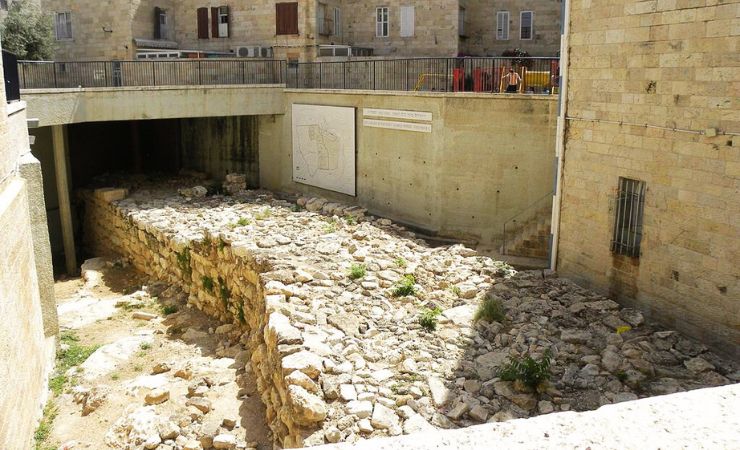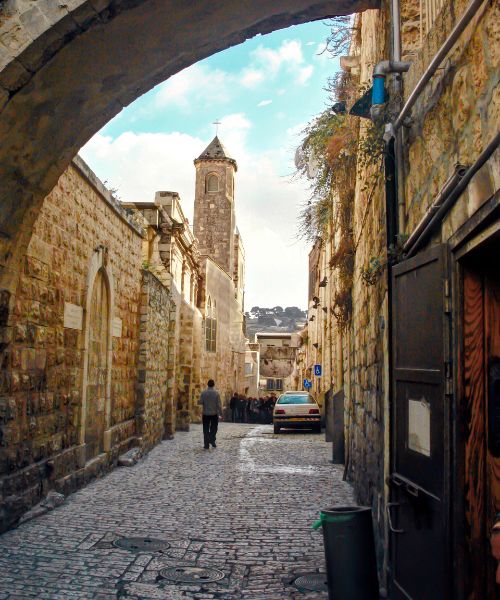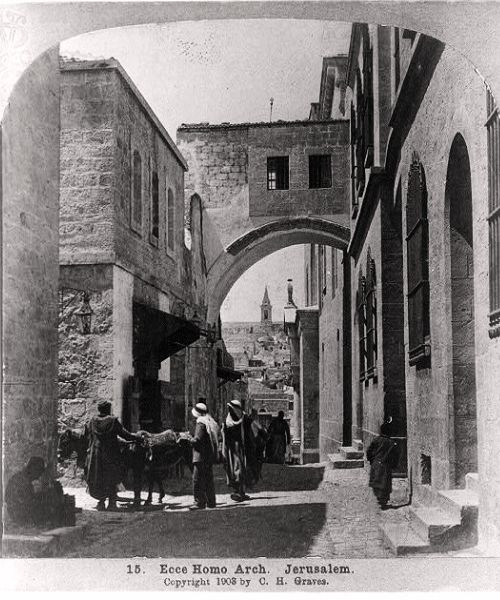The Broad Wall of Jerusalem: An Ancient Fortification from Almost 3,000 years ago
Introduction
The Broad Wall of Jerusalem, known in Hebrew as Ha’Choma Ha’Rechava, is an ancient defensive wall in the Jewish Quarter of Jerusalem’s Old City.

Location
The Broad Wall is situated in the Jewish Quarter of Jerusalem’s Old City. The wall’s unbroken length, uncovered by archaeologist Nahman Avigad in the 1970s, runs 65 meters long.
A glimpse into the Broad Wall's history
The historical events leading to the construction of the Broad Wall of Jerusalem (also known as Hezekiah’s Wall) are deeply intertwined with the political and military upheavals of the late 8th century BCE. The year 701 BCE marked a period of intense conflict, with the Assyrian king Sennacherib rampaging through the countryside on a punitive campaign against his rebellious vassal, King Hezekiah of Judah.
In response to this impending threat, King Hezekiah, guided by the prophet Isaiah, began preparing his capital city for the anticipated onslaught. In the lower city, known as the City of David, the Israelites undertook a significant engineering project, cutting a long water tunnel through solid rock to divert water from the Gihon Spring to a new inner-city reservoir. This strategic move was aimed at depriving the invading Assyrians of an abundant water source, as mentioned in Chronicles: “Why should the Assyrians come and find water in abundance?”.
Simultaneously, in the upper city, today’s Jewish Quarter, Hezekiah initiated a massive construction project. The Bible records that:
Also he strengthened himself, and built up all the wall that was broken, and raised it up to the towers, and another wall without, and repaired Millo in the city of David, and made darts and shields in abundance.
This massive foundation wall, unearthed by Israeli archaeologists in the 1970s, is identified with that defensive project. Its remarkable thickness of 7.5 meters, or 23 feet, suggests that it might be the “Broad Wall” referred to by Nehemiah two and a half centuries later.
The construction of this wall during the reign of King Hezekiah was a significant event, as it put to rest a long-running scholarly debate about the size of biblical Jerusalem. The discovery of the Broad Wall much further to the west discredited the minimalist view of the city as not much more than it had been in King Solomon’s day.
The Broad Wall also holds a unique architectural feature. Unlike typical defensive walls that bulge outward to fend off enemy attacks, the Broad Wall bulges inward, curving around the top of a shallow gully. This design might have been a strategic move to trap enemies in a low “killing ground,” at the mercy of the defenders’ arrows from the walls on either side.
The construction of the Broad Wall was not without its costs. The Bible records that houses were broken down to fortify the wall, a practice described by Isaiah: “You counted the houses of Jerusalem, and you broke down the houses to fortify the wall”. This ancient example of “eminent domain” is evident in the remnants of a house found within the cusp of the Broad Wall.



Archeological Insights
Today, the Broad Wall of Jerusalem stands as a significant archaeological site located in the Jewish Quarter of Jerusalem’s Old City. The wall, unearthed in the 1970s by Israeli archaeologist Nahman Avigad, is a massive ancient defensive wall structure, seven meters thick.
The unbroken length of the wall uncovered by Avigad’s dig runs 65 meters long and is preserved in places to a height of 3.3 meters. This impressive structure provides a tangible link to the city’s past, offering visitors a glimpse into the defensive measures taken by the city’s inhabitants during the reign of King Hezekiah in the late eighth century BCE.
The Broad Wall is not just a historical artifact but also a testament to the architectural prowess of the ancient inhabitants of Jerusalem. Its massive structure and the strategic planning evident in its construction offer valuable insights into the city’s history and the challenges faced by its inhabitants.
Sources and Additional Reading
The Broad Wall of Jerusalem that fended off the Assyrians – Haaretz
Nearby Sites
-
- Zion Gate: Also known as David’s Gate, Zion Gate is one of the seven open gates in Jerusalem’s Old City Walls. Just outside of it you can find Kind David’s Tomb, the Room of the Last Supper, and the Dormition Abbey.
- Jewish Quarter: This is one of the four traditional quarters of the Old City of Jerusalem. It is home to several significant sites, including the Broad Wall, the Western Wall, the Hurva Synagogue, and numerous yeshivas and synagogues.
- Hurva Synagogue: The Hurva Synagogue, also known as “The Ruin Synagogue,” is a historic site that has been destroyed and rebuilt several times over the centuries.
- The Roman Cardo: The Roman Cardo in Jerusalem was an ancient north-south thoroughfare, lined with columns and shops, serving as a major commercial hub in the city.



